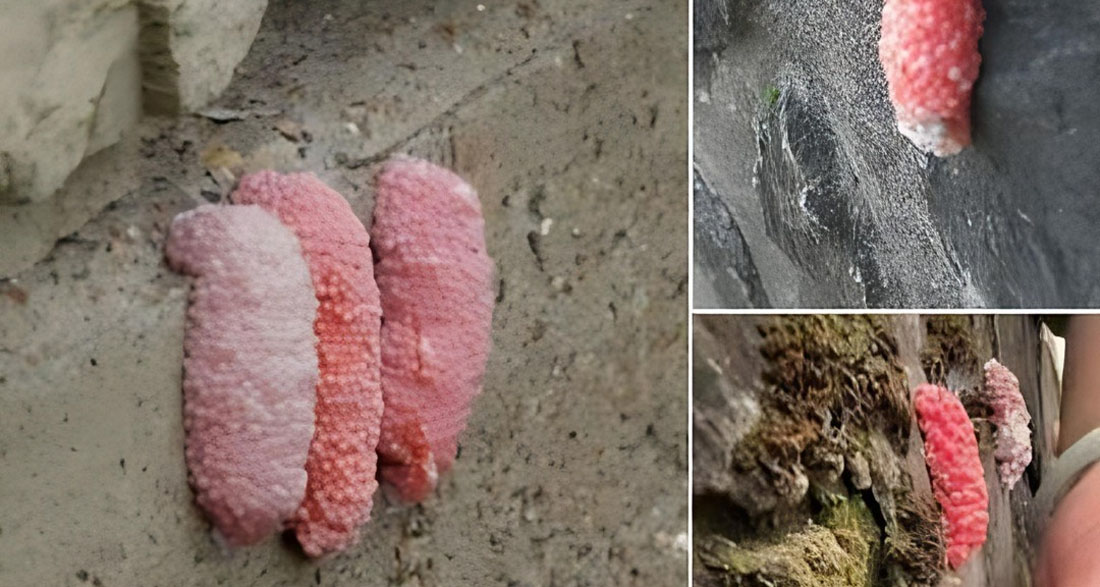The Hidden Threat in Your Garden: Apple Snail Eggs
It’s easy to overlook them at first, but those clusters of small, bright pink eggs you find in your garden could be a huge problem. They might look like something out of a holiday display, but in fact, they’re a clear sign of an invasive species—the apple snail—a dangerous creature that threatens not just your garden, but the entire ecosystem around you.
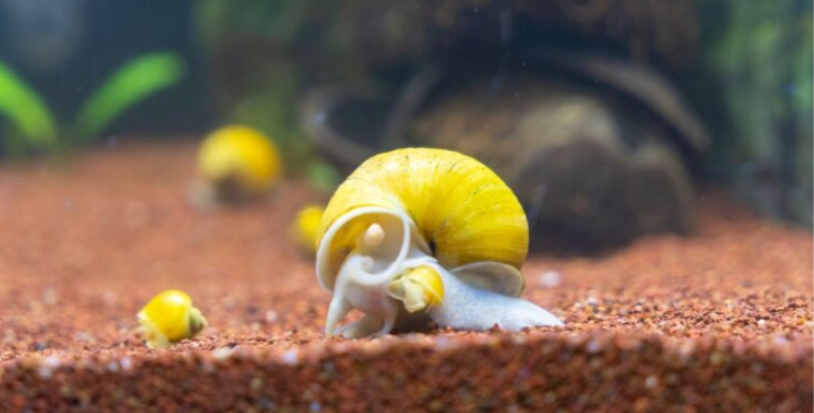
Originating in South America, these snails have spread across the world, invading lakes, ponds, and other wet habitats. And once they arrive, they’re tough to get rid of. Let’s dive deeper into the world of apple snails and how they’re affecting places around the globe.
Apple Snail: The Giant of Freshwater Snails
Apple snails are unlike the small, harmless snails you might find in a backyard garden. They are much larger—some can grow up to 10 centimeters wide! These freshwater snails love places like ponds, lakes, and swamps, and are especially fond of warmer climates, where they reproduce at an alarming rate.
One of the most surprising things about apple snails is how quickly they reproduce. Each cluster of eggs contains between 400 and 600 tiny eggs, each about the size of a pencil tip. “They’re unstoppable,” says marine biologist Dr. Karen Lano. “Once they start laying eggs, it’s just a matter of time before they take over the area.”
What Makes Apple Snails So Dangerous?
Apple snails are listed as one of the world’s top 100 most invasive species. Their ability to spread has a lot to do with how well they adapt. They’ve traveled from South America to countries in North America, Europe, and Asia—and they’re not just surviving, they’re thriving.
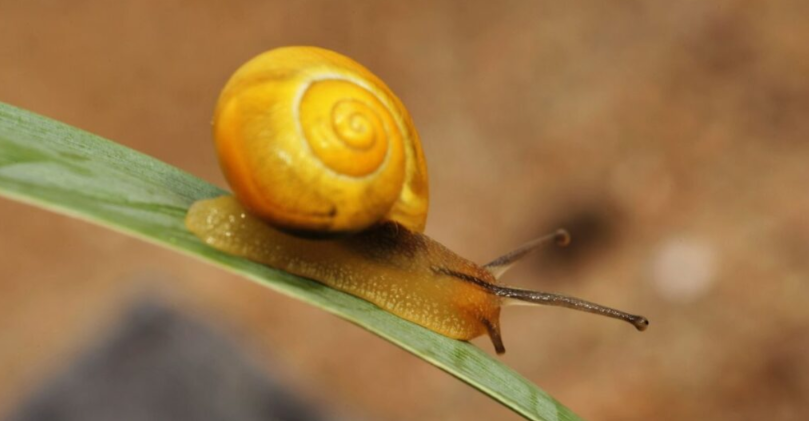
Once they invade a new area, they start eating. And they don’t just eat any plants—they consume anything they can find. In Southeast Asia, where they were introduced in the 1980s, apple snails have caused major damage to rice fields, devastating crops and causing huge financial losses. “We’ve never seen anything like it,” says farmer Chai Son, who’s seen his fields destroyed. “One day, everything was fine, and the next, it was all gone.”
How to Spot Apple Snail Eggs
Apple snail eggs are easy to spot if you know what to look for. They’re usually bright pink or orange and found in clusters of hundreds. You’ll find them on plants, leaves, or anything close to water. The vibrant color is a warning to predators that the eggs are toxic, but it doesn’t stop them from hatching. Once those eggs hatch, the snails begin to eat everything in sight.
So, if you see these eggs, it’s important to act quickly. Each cluster could soon turn into hundreds of snails, and the damage they cause will follow.
The Global Spread and Damage Caused by Apple Snails
Apple snails have spread far and wide. They’ve taken hold in Florida, Texas, and California in the U.S., and can be found in countries like France and Spain in Europe. In 2018, when apple snail eggs were found in France, authorities were forced to act immediately. Despite their efforts, the snails continued to spread.
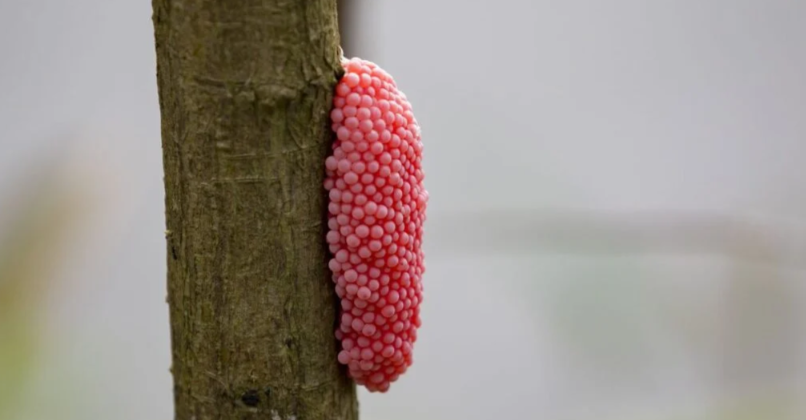
These snails are damaging to both agriculture and nature. In the water, they devour plants that are essential for healthy ecosystems. When they eat these plants, fish and other wildlife suffer, and water quality drops. For farmers, apple snails can destroy entire crops, leading to financial losses.
Fighting Back Against Apple Snails
Stopping the spread of apple snails is tough, but it’s not impossible. One way to help is by reporting any sightings of apple snails or their eggs to local authorities. Early detection is key to keeping the situation under control.
In addition to reporting, local communities are encouraged to manually remove apple snail eggs. This means scraping them off surfaces like leaves and branches and disposing of them properly. “It’s a small step, but it helps,” says eco-activist Lisa Roberts. “The sooner we act, the more we can control their spread.”
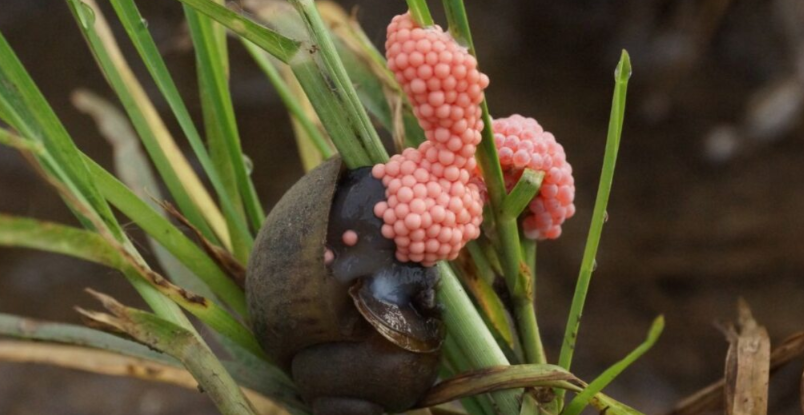
Some scientists are also working on using natural predators or parasites to control apple snail numbers, but this is still in the testing phase. It’s a complex process that requires careful observation to avoid harming the local environment.
The Threat to Your Garden
If you love gardening, the apple snail is an enemy you need to watch out for. They can destroy your plants, especially those around water. Apple snails can be tough to remove once they’ve taken hold, so it’s essential to keep an eye out for those pink eggs.
Conclusion: The Battle Against Apple Snails
Finding pink eggs in your garden might be a little unsettling, but now you know that these eggs could mean trouble. Apple snails are dangerous invaders that damage ecosystems, crops, and gardens. By staying aware, reporting sightings, and removing eggs, you can play a crucial part in stopping their spread.
“Every little bit helps,” says environmentalist Mary Steele. “It’s up to all of us to protect our world from these invaders.”
Share your thoughts in the comments!

